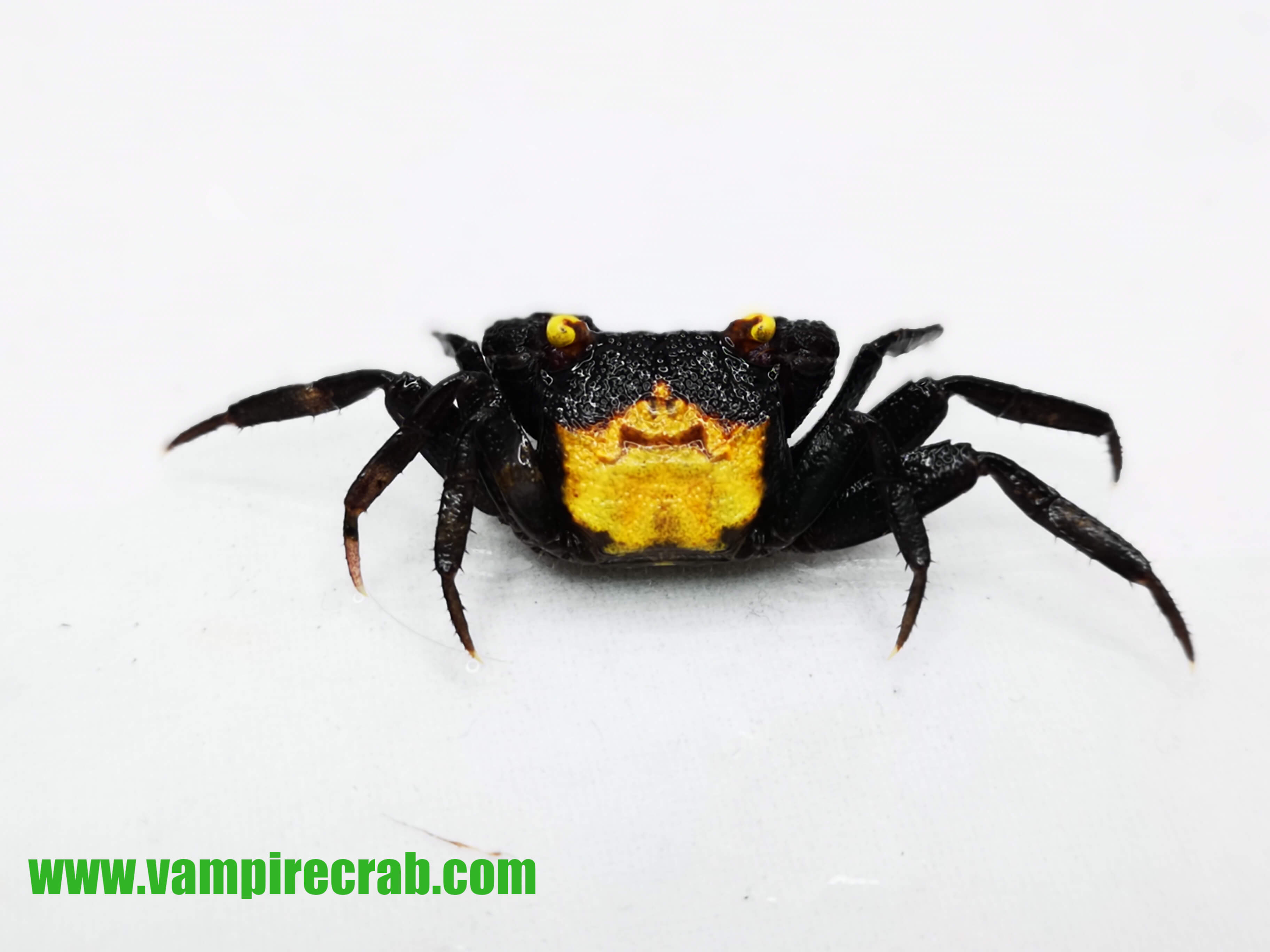Crabs of the Geosesarma genus are small land crabs that inhabit tropical forests. Many species with different colors appear in breeding. Many of them have not yet been scientifically described. These crabs are distinguished by their colors, are easy to breed and do not require large spaces. We still have little information about the species due to their diversity, we are still learning about the entire genus of these crabs. 75 species have been officially described (03.2025).
Occurrence: Southeast Asia. Indonesia, Singapore, Malaysia, Thailand, Taiwan, Philippines, India - Andaman and Nicobar Islands, Solomon Islands, Papua New Guinea
History: The first described species in 1892 by De Man, the last described species in 2025.
Name: The common name for the entire genus Geosesarma is - Vampire Crab
Size: 2-5 cm
Sex: Clear sexual dimorphism. Methods of determining sex:
1. Look underneath the crab male - narrow abdomen resembling an arrow. Female - wide, oval abdomen.
2. Male - large, massive pincers, Female - small, fine pincers
3. Colors. In some species, males have different colors and females have different ones. In most species, males are prettier and more brightly colored.
Reproduction: In breeding, they reproduce often and easily. Males are brutal to females during copulation. Depending on the species, there are different methods of reproduction.
1. The female carries eggs under her abdomen, the young crabs hatch in full form, then leave the females
2. The female carries eggs under her abdomen, the young crabs hatch in full form, then the young enter the carapace where they spend some time with the female and only then leave the females
3. The female carries eggs under the carapace then releases the eggs into fresh water where the larvae hatch and then transform into small crabs
4. The female carries eggs under the carapace then releases the eggs into salt water where the larvae hatch and then transform into small crabs
The young crabs spend most of their time near water bodies. In breeding, small crabs grow for a long time, it is difficult to raise a lot of offspring.
Molting: Depending on the species, crabs undergo molt in the water or on land.
Environment: Depending on the species, they inhabit different environments.
Tropical forests, near streams or water bodies. Wetlands. Trees, shrubs, plants such as pitcher plants, ferns, bromeliads, neoregelias. Synanthropic areas, cultivated fields, palm forests. Areas of waterfalls.
Protection: No species protection. Some species occur in National Parks and reserves. Unknown status of most species. High threat from humans.
Behavior: School crabs, it is recommended to breed in groups, minimum 3 individuals. The best ratio is 1 male to 2 females. Territorial, can be aggressive towards each other. They like and can climb very well. They do not destroy living plants. They dig their own burrows. They are mostly nocturnal but are active around the clock.
Tank size: min 30x30x30 cm for 3 individuals. The bigger the better and you can keep more crabs. It must be secured, crabs can escape.
Tank appearance: Division into 2 parts, land part 80% and water part 20%. Easy access to the water tank.
Land part: Lots of hiding places, min. 4 cm layer of substrate for digging, climbing elements.
Water part: min. 5 cm depth, easy access to land.
Lighting: LED, UVB, Regular bulb, Daylight - for 12h
Temperature in the tank: 22-26°C
Water temperature: 19-24°C
Humidity in the tank: 80-90%
Plants: Live, do not destroy plants
Feeding: Omnivorous. Most species prefer protein food, they like to hunt small insects and do it very well.
Live food: isopods, crickets, cockroaches, snails, shrimp, fish, earthworms, insect larvae, midges, springtails and other small invertebrates.
Protein food: Fish food, ready-made crab food, fish fillet, frozen shellfish, dried insects, boiled egg, pieces of meat
Plant food: Fish food, ready-made crab food, fruits, vegetables, spirulina, algae, Pilea nummulariifolia
Crab companionship: Cleaning crew - springtails, isopods, earthworms. Snails, shrimp, fish, ornamental cockroaches, millipedes, small lizards, small frogs.
Keeping different species of Geosesarma together: NO
Hybrids: Possible, Should not be created! Harmful to the genus
Level of difficulty in breeding: Very easy - for beginners
Origin in breeding: 95% - crabs from catch, import. 5% - crabs born in breeding
Colour varieties: None - do not occur. Some crabs within the species have different colours
Comments: Sensitive to transport, especially shipping
